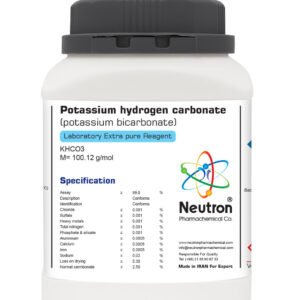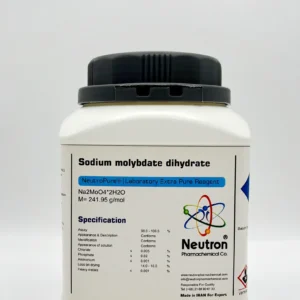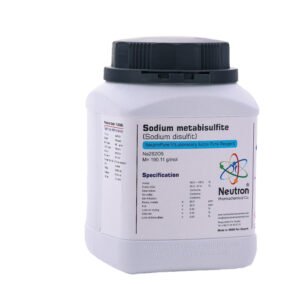گوگرد
| Chemical formula | S |
| Density | 1.96-2.07 g/cm3 |
| Molar mass | 32.06 g/mol |
| HS Code | 28020000 |
| CAS number | 7704-34-9 |
| Storage | Without limitation |
| EC number | 231-722-6 |
| SDS | available |
| Odour | weak characteristic |
| Form | solid |
| Color | light yellow |
| Ignition temperature | 235°C |
| Solubility in water | almost insoluble |
| Solubility in ethanol | slightly soluble |
| Solubility in chloroform | soluble |
| Falsh point | 160 °C |
| Boiling point | 444 °C |
| Melting point | 113 – 119°C |
| Vapour pressure | <0.01 hPa |
| Thermal decomposition | >250°C |
| Assay | 99.0 – 101.0 | % | |
| Description | Conforms | ||
| Identification | Conforms | ||
| Solubility | Conforms | ||
| Appreance of solution | Conforms | ||
| Odour | Conforms | ||
| Acidity,Alkalinity | Conforms | ||
| Chloride | ≤ | 0/01 | |
| Sulphate | ≤ | 0/01 | |
| Sulfide | ≤ | Conforms | % |
| Arsenic | ≤ | 0/0004 | % |
| Sulfated ash | ≤ | 0/2 | % |
Sulfur is a yellow, odorless, brittle nonmetal that occurs naturally in elemental form and in various compounds, particularly sulfides and sulfates. It is an essential element for life and is widely used in industry due to its chemical reactivity, abundance, and versatility.
🏭⚗️ Production
Sulfur is mainly obtained from underground deposits using the Frasch process, which involves injecting superheated water and air to melt and extract elemental sulfur. It is also recovered as a byproduct from refining petroleum and natural gas, where sulfur-containing compounds are removed to reduce pollution. In addition, sulfur is produced during the smelting of metal ores, particularly in the production of copper and zinc.
🔬 Properties
The chemical symbol of sulfur is S, and its atomic number is 16. Its most common allotropic form is a bright yellow crystalline solid composed of S₈ rings. It has a molar mass of approximately 32.07 g/mol and a melting point of about 115.2 °C. Sulfur is insoluble in water but soluble in carbon disulfide. It is a poor conductor of electricity and is stable under normal conditions. In nature, sulfur exhibits several allotropic forms, with rhombic and monoclinic sulfur being the most common.
🧪 Applications
Sulfur is used extensively in the production of sulfuric acid, one of the most important industrial chemicals. It is also used in the manufacture of fertilizers, particularly ammonium sulfate and superphosphate. In the vulcanization of rubber, sulfur improves elasticity and strength. Other applications include the production of fungicides, insecticides, batteries, matches, and in the paper and pulp industry for bleaching. Elemental sulfur is also used in pharmaceutical products and skin treatments.
⚠️ Safety
Elemental sulfur is generally considered safe under normal handling, though it can cause mild irritation to the skin, eyes, or respiratory system in dust form. When burned, sulfur produces sulfur dioxide gas, which is toxic and can cause respiratory distress. Proper ventilation and protective equipment should be used when working with sulfur dust or fumes. It should be stored in a cool, dry, and well-ventilated area away from sources of ignition and strong oxidizing agents.





